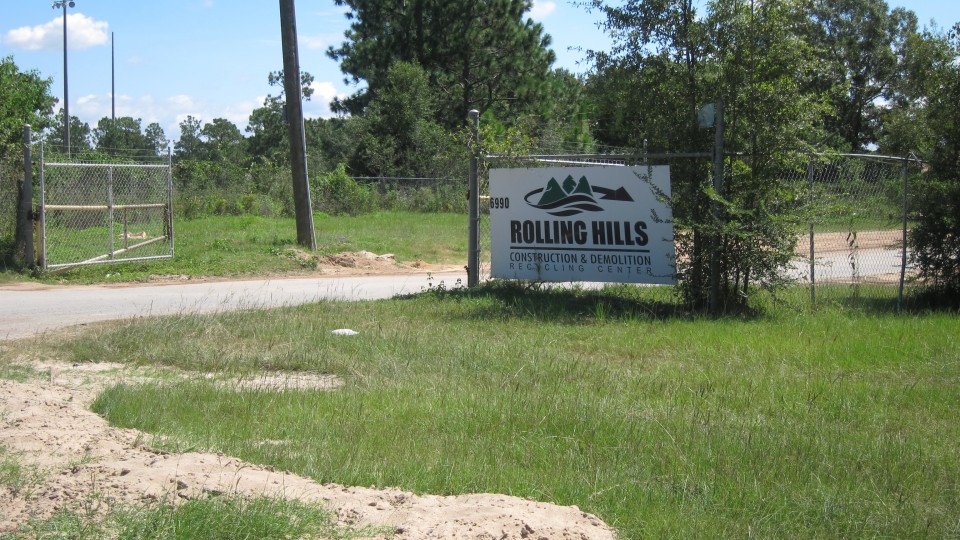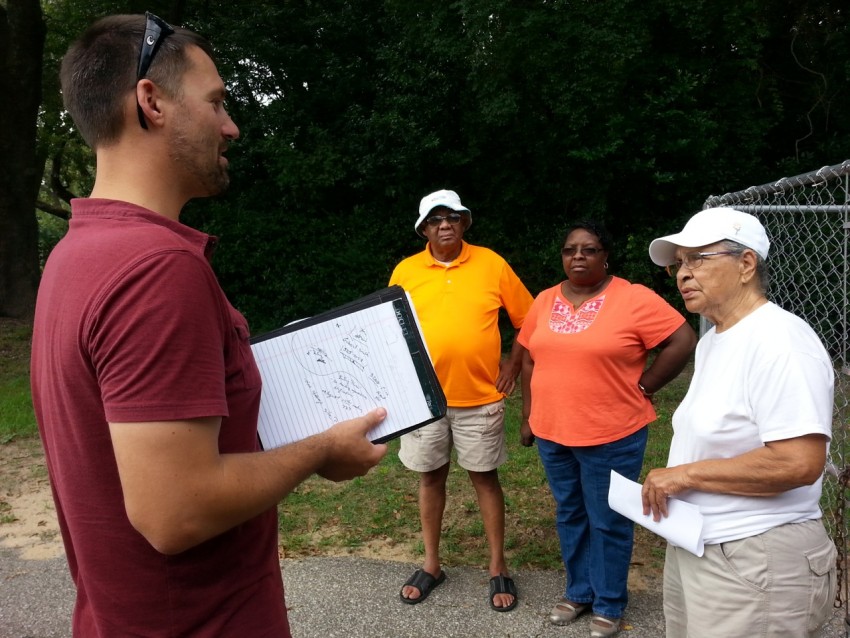Rolling Hills owners surrender surety bond
- October 27, 2015
- / Carlton Proctor
- / community-dashboard

After months of legal wrangling and delays, owners of the Rolling Hills landfill have surrendered their $651,633 surety bond to the Department of Environmental Protection.
Spokeswoman Brandy Smith said DEP received the funds earlier this month from the surety company holding the bond for South Palafox Properties.
South Palafox Properties owns the 22-acre property, now in foreclosure, and operated the landfill — hit will 17 DEP violations over the past several years — until it was closed in April under an order by DEP.
The surrendered bond money will be used to implement an engineering plan to cover and forever seal the nearly 20-acre landfill located in the Wedgewood community.
"What will happen now is we will have one of our engineers design a scope of work for the closure," Smith said. "The surety bond company had the option to do the closure themselves, but they decided not to, and deposited the funds into a DEP trust fund.
After the scope of work is done, DEP will solicit proposals from outside engineering firms to design the final closure plan, Smith said.
Smith said she does know not exactly when the scope of work will begin, nor when the contract for covering and remediating the landfill will go out to bid.
"I do know we're working now to set up the site visit for our engineer to visit the landfill site and determine the scope of work," she said. "That will happen in the next week or two."
Once the scope of work plan is in place, and an outside engineering firm selected, Smith said DEP anticipates work to cover and remediate the landfill will proceed quickly.
That process can't come quickly enough for Wedgewood area residents, for years living with odors, runoff and noise from the landfill's operation.
Wedgewood community activist Gloria Horning said she is pleased the surety company has surrendered the bond, but is concerned about the overall cost of covering the landfill site.
"I'm confused about what happens next," Horning said. "South Palafox Properties has surrendered the $651,633 bond, but I think it's going to cost the taxpayers millions of dollars to do the actual cleanup."
Horning said Escambia County Attorney Alison Rogers announced during a commission meeting last week the Rolling Hills property is now in foreclosure.
In an email to Horning from DEP District Manager Shawn Hamilton wrote, "Now that surety bond has been turned over to the department, DEP will take the lead in closing the landfill."
However, once the closure is completed — a process that could take months, if not longer — "the state will not take ownership of the property as a result of the bond being surrendered," Hamilton wrote in his email.
Ultimately, the ownership of the property will be determined by the courts following conclusion of the foreclosure proceedings.
Efforts to reach the South Palafox Inc., principals were unsuccessful. The company's Pensacola phone number has been disconnected.
Closure costs uncertain
Meanwhile DEP has not put forth an estimate of the complete cost of covering and remediating the property around the site.
Once the scope of work plan is completed, DEP will have a better estimate of the cost to cover the landfill site, Smith said.
In addition to the $651,633 bond for closure, the surety company is also holding a $202,318 bond for the long-term care and maintenance of the now defunct facility.
Smith said the landfill has exceeded its permitted 17-acre footprint by more than two acres.
"We have confirmed the Rolling Hills facility is covering a 19.75-acre disposal area," Smith said. "And the overall property is 22 acres."
Smith said DEP continues to get complaints from Wedgewood residents of foul odors being emitted from area residents.
"In addition to those complaints, we are concerned about stormwater runoff from the site," she said.

Escambia County staff added a second air quality monitor in the Wedgewood neighborhood on Aug. 11. Photo credit: Gloria Horning.
While air quality complaints continue, Escambia County spokesman Keith Wilkins said the number of complaints has dropped over the last eight months the landfill has been closed.
"Overall, things out there (at Rolling Hills) are much better," said Wilkins, director of the county’s department of community and environment.
The landfill, when it was closed in April, was about six feet above its permitted elevation. As the owners were going in and cutting down the height of the debris pile, it was opening up pockets of H2S (hydrogen sulfide gas) which caused complaints, Wilkins added.
"Since they've quit doing that, the landfill has been pretty stable," he said.
Wilkins said there are still odors emitting from the landfill, but they are largely weather dependent.
"But from an operations standpoint, things have been much better as far as odors," he added. "The landfill has been closed since April, and we have a code enforcement officer stationed there, monitoring the gates and turning away trucks with debris."
Rolling Hills is most often compared to Saufley Landfill, which was closed to the public in 2006. The deed to that facility was transferred to the county in March 2010. Escambia County has paid more than $7.8 million since then to close, cap and monitor that facility.
The ultimate cost of closing Rolling Hills remains to be seen.
Covering a landfill
When DEP talks about "covering" a closed landfill, it must follow a clear set of rules established by the Legislature.
Rule 62-701 speaks to "final cover," and defines how much cover must be applied to a defunct landfill and the type of material that must be used to effect a legal closure of a fill site.
Before a cover is applied, DEP rules state the landfill must be graded and compacted as much as possible to lower and reduce the height and profile of the fill site.
The landfill site must be covered with at least six inches of topsoil that is able to support vegetation.
What's more, DEP officials say the mound of covered debris and its edges must be sloped at an angle that prevents, as much as possible, erosion and ponding, or the gathering of pools of runoff water.
The remediation and covering work is supervised by DEP, but contracted to private engineering firms licensed by DEP to perform such work.
 CivicCon launches with a look at good growth in cities
CivicCon launches with a look at good growth in cities
 Building stronger brains one baby, one parent at a time
Building stronger brains one baby, one parent at a time
 SCI debuts commercial on Early Learning City
SCI debuts commercial on Early Learning City
 Entrecon: World class speakers and an opportunity to sharpen skills
Entrecon: World class speakers and an opportunity to sharpen skills
 PYP Quality of Life survey 2017
PYP Quality of Life survey 2017
 EntreCon Pensacola 2016: A look back
EntreCon Pensacola 2016: A look back
 Leadership tip: getting better employee takeaways
Leadership tip: getting better employee takeaways
 Leadership tip: be interested instead of interesting
Leadership tip: be interested instead of interesting
 Leadership tip: delivering difficult messages
Leadership tip: delivering difficult messages
 Brain Bags boost Arc, Early Childhood Court programs
Brain Bags boost Arc, Early Childhood Court programs